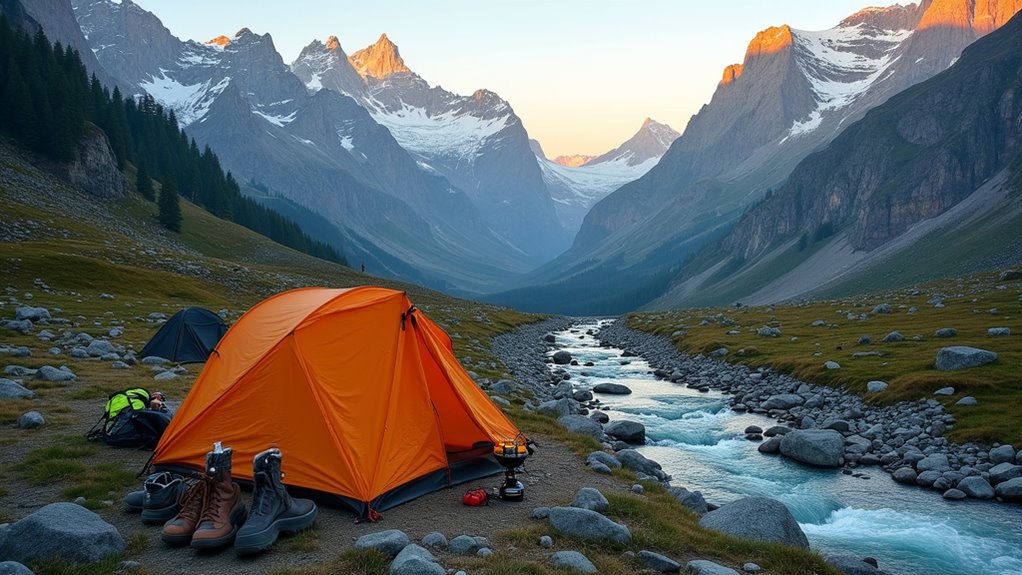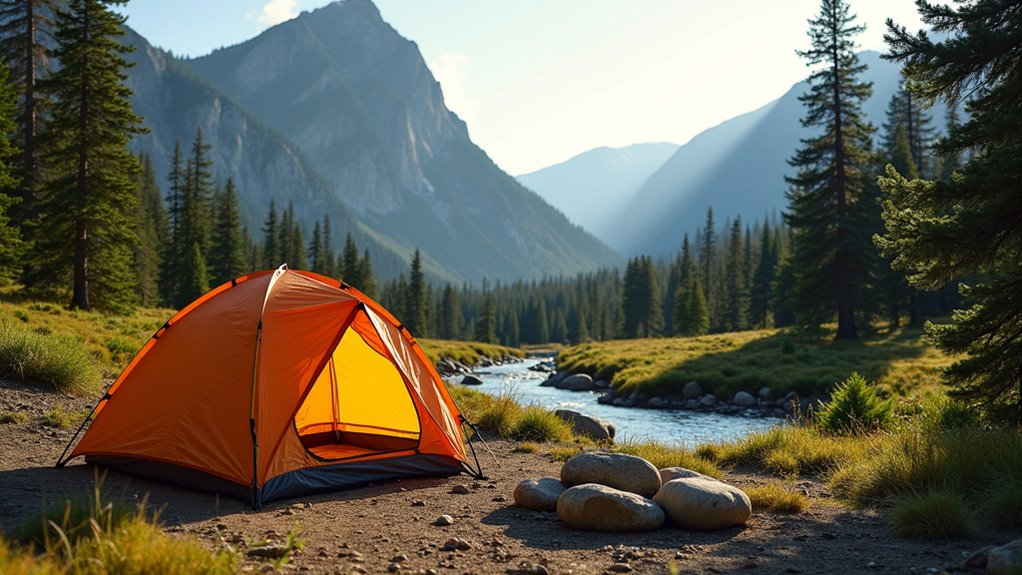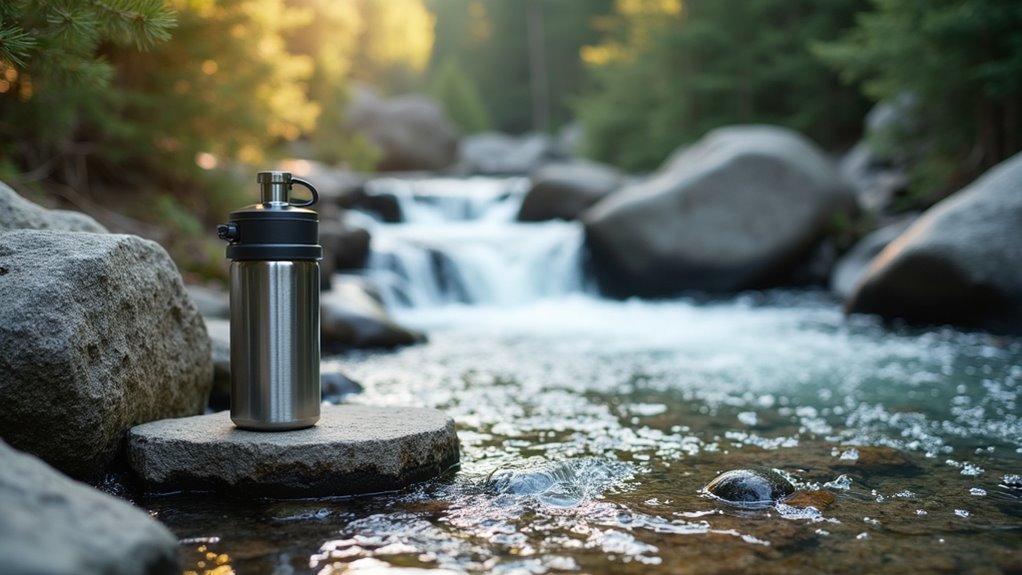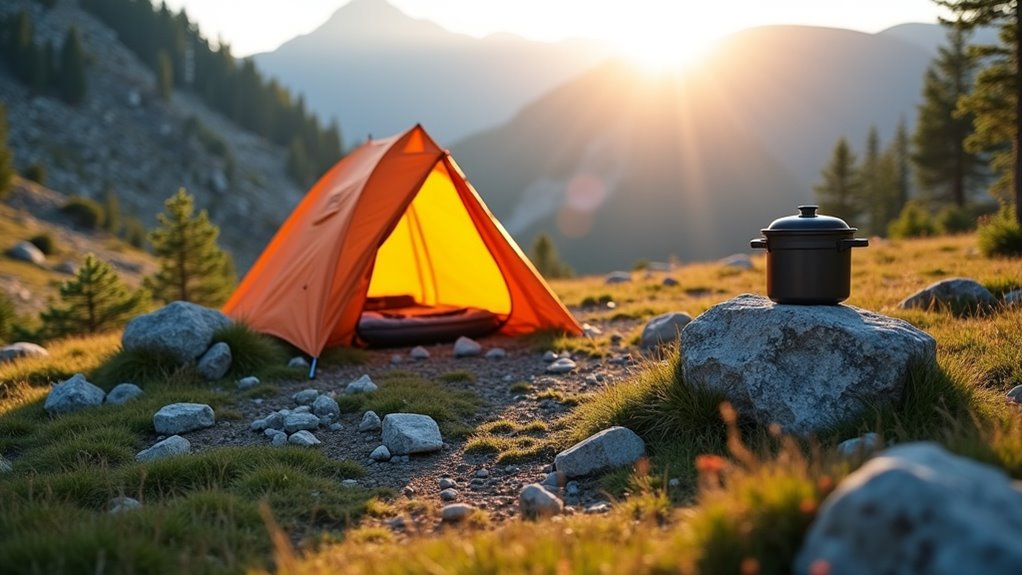Physical Address
304 North Cardinal St.
Dorchester Center, MA 02124
Physical Address
304 North Cardinal St.
Dorchester Center, MA 02124

Inside secrets to mountain camping that separate experienced adventurers from those who retreat home with cautionary tales.
You’ve probably stared at those towering peaks and thought about camping up there, but here’s the thing—mountain camping isn’t just regular camping with better views. It’s a whole different game that’ll humble you fast if you’re not prepared. The weather can flip from perfect to dangerous in minutes, your gear choices become life-or-death decisions, and one wrong campsite pick can turn your dream adventure into a survival story you’d rather forget.

The perfect campsite can make or break your mountain adventure, so you’ll want to scout locations before the sun starts dropping behind the peaks. Look for level ground that’s naturally sheltered from wind – behind boulders or tree lines work great.
Scout your campsite before sunset hits – find level, sheltered ground behind natural windbreaks to ensure your mountain adventure starts right.
Avoid camping in valleys where cold air settles overnight, and steer clear of ridgetops where you’ll get hammered by weather.
Check for water sources within reasonable walking distance, but don’t camp right beside streams since they’re noisy and attract bugs.
Test the ground with your boot heel – if it’s too rocky or root-filled, you’ll regret it when you’re trying to sleep.
Finally, pick spots with good drainage so you won’t wake up in a puddle if it rains. Remember that campsite selection involves weighing multiple factors simultaneously to ensure both comfort and safety throughout your mountain expedition.
Mountain weather changes faster than your mood after missing morning coffee, so you’ll need to prep for everything from blazing sun to sudden snowstorms. Pack layers instead of one heavy jacket – base layers, insulating mid-layers, and waterproof shells work better and cost less than expensive all-in-one gear.
Check forecasts obsessively, but don’t trust them completely above treeline. Download offline weather apps since cell service disappears fast. Pack rain gear even when skies look perfect – afternoon thunderstorms love surprising overconfident campers.
Bring extra socks and underwear. Wet feet lead to miserable nights and potential frostbite. A cheap space blanket weighs nothing but could save your life if temperatures drop unexpectedly.
Always have an exit strategy and stick to it when weather turns nasty. If you’re planning to bring an RV for base camp access, research thoroughly beforehand to avoid common buying mistakes that could leave you stranded with unreliable transportation.

While fancy gear catches your eye in outdoor stores, smart mountain campers focus on essentials that won’t break the bank or your back. You’ll need a quality sleeping bag rated for mountain temperatures, a reliable headlamp with extra batteries, and a sturdy water filter or purification tablets.
Don’t skimp on insulation layers – merino wool base layers and a puffy jacket are game-changers when temperatures drop.
Pack a first aid kit with altitude sickness medication, blister treatment, and pain relievers. A durable tarp provides emergency shelter and ground protection.
Your backpack should fit properly and distribute weight evenly. Consider investing in one of the unique travel backpacks designed specifically for outdoor adventures to enhance your mountain camping experience. Bring duct tape for quick repairs, paracord for multiple uses, and high-energy snacks.
Test everything at home first – mountains aren’t the place for equipment failures.
Having the right gear means nothing if you can’t set up a safe, comfortable campsite in mountain terrain. Scout for level ground away from dead trees, loose rocks, and water runoff paths. You don’t want branches falling on your tent or flash floods ruining your night.
Position your tent’s entrance away from prevailing winds, and use natural windbreaks like boulders or dense vegetation. Stake down everything securely – mountain winds can destroy gear in minutes.
Create a cooking area at least 10 feet from your tent using a flat rock or portable camp table.
Store food in bear canisters placed 100 yards away from sleeping areas.
Finally, designate bathroom spots downhill and 200 feet from water sources. When selecting your tent placement, consider factors like ground conditions, proximity to water, wind exposure, and safety hazards to ensure a successful mountain camping experience. These simple steps prevent costly gear damage and dangerous situations.

Water becomes your most critical resource above treeline, where streams may be scarce and weather can change rapidly. Scout water sources during daylight and mark their locations on your map.
Fast-moving streams are safer than stagnant pools, but you’ll still need purification methods.
Pack lightweight water purification tablets or a portable filter—they’re cheaper than getting sick. Boiling works too, but it burns precious fuel.
Always treat water from any natural source, even crystal-clear mountain streams can harbor harmful bacteria.
Carry extra water containers and fill them whenever you find reliable sources. Don’t rely on finding water at your campsite.
If you’re camping near snow, you can melt it for water, but this requires significant fuel and time.
For maintaining personal hygiene in the backcountry, consider bringing camping showers that can help you stay clean when water sources are limited.
As you climb higher, your body faces a double challenge: thinner air that carries less oxygen and rocky terrain that demands more energy than you’d burn on flat ground. You’ll need to pace yourself differently—take frequent breaks and drink water constantly to prevent altitude sickness.
Start your ascent early when temperatures are cooler and you’ve got maximum daylight. Choose established trails over bushwhacking to conserve energy for the altitude adjustment. Pack lightweight, high-calorie snacks like nuts and dried fruit that won’t weigh you down but fuel your muscles.
Watch for headaches, nausea, or dizziness—classic altitude warning signs. If symptoms worsen, descend immediately.
Test your gear at lower elevations first; don’t discover equipment failures when you’re already fighting thin air and steep grades. A reliable Pegasus Tent provides essential shelter for up to four people during challenging mountain conditions.

Mountain environments can’t handle the same impact that hardier lowland areas absorb, so you’ll need to step up your Leave No Trace game considerably. Pack out everything you bring in, including food scraps and toilet paper.
Use established campsites when possible rather than creating new ones on fragile alpine vegetation. Camp at least 200 feet from water sources to protect wildlife corridors and prevent contamination.
Dispose of waste properly by digging catholes 6-8 inches deep and 200 feet from water, trails, and camp. Use biodegradable soap sparingly, if at all.
Keep fires small and use existing fire rings, or better yet, stick to a lightweight camp stove. Store food in bear canisters or hang it properly.
Take only photos and leave rocks, plants, and artifacts untouched for others to enjoy.
For those who prefer the convenience of a mobile basecamp, caravan camping offers an excellent way to experience mountain wilderness while maintaining a comfortable retreat after challenging alpine adventures.
You’ve mastered the basics, but here’s what separates weekend warriors from true mountain campers: when that unexpected storm rolls in at 2 AM, you’ll know exactly what to do. Your gear won’t break the bank, your campsite won’t betray you, and you won’t panic. The mountains don’t care about your experience level—they’ll test every shortcut you took and reward every detail you got right. Are you ready?